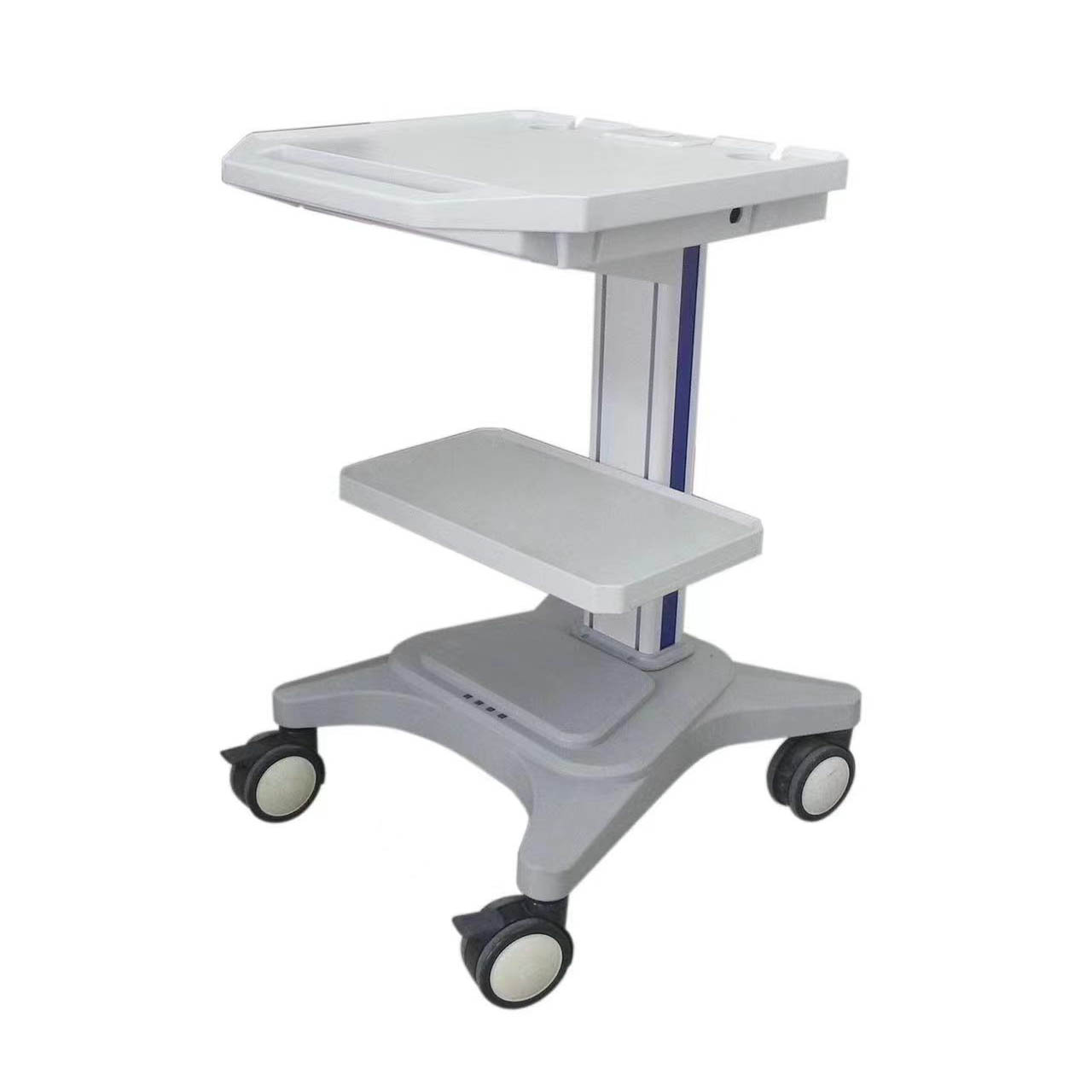- Home
- Capability
- Products
- About Us
- Service Industry
- Service Cases
- Video
- Contact Us
-
Language

2024-11-09 13:38:08
In medical environments, the design and materials of equipment carts are not only related to the user experience, but also directly affect work efficiency and patient care quality. In recent years, thick-walled thermoformed medical carts have gradually become the preferred choice for hospital equipment procurement due to their stability, easy cleaning, modular design and other characteristics.

1. Stability brought by material advantages
The choice of thick-walled thermoformed materials is not accidental. Thick-walled thermoformed medical carts launched by a US company are widely used in operating room equipment management. According to their test report, the carts can withstand up to 300 pounds and remain stable. Compared with traditional metal carts, this type of cart has passed the durability test of the American Society for Testing and Materials (ASTM) and is obviously more durable.
A study by the US Hospital Equipment Evaluation Laboratory (HETL) shows that the average life of this type of cart is more than 10 years, while the service life of traditional metal carts is usually 5 to 7 years. This means that the use of thick-walled thermoformed carts can help hospitals reduce the cost of frequent equipment replacement. For hospitals, this is undoubtedly a long-term economic investment, which not only improves work efficiency but also saves operating costs.
2. Antibacterial design and easy cleaning
The antibacterial property of medical equipment is crucial in the medical environment. The gap structure of traditional metal carts is easy to hide dirt, while thick-walled thermoformed carts are more convenient to clean with their smooth and seamless surface design. After a hospital of the National Health Service (NHS) of the United Kingdom tried thick-walled thermoformed medical carts, it was found that the growth of bacteria on the surface of the carts was significantly reduced. The time spent on each disinfection was reduced by 20%, and the risk of infection for nursing staff was also reduced.
A study published in the British Journal of Infection Control and Hospital Epidemiology pointed out that carts with smooth and seamless surfaces can effectively reduce the amount of bacterial growth, which is more than 50% less than that of traditional carts. Such a design not only reduces the burden of cleaning, but also provides a safer medical environment for medical staff and patients.
3. Ergonomic design to improve the operating experience
In medical equipment, ergonomic design is always a focus of attention. A hospital in Australia tried out thick-walled thermoformed carts in operating rooms and emergency rooms. The results showed that the carts effectively reduced fatigue of medical staff during long-term pushing and improved operating efficiency. Nurses reported that the height and handle position of the carts were reasonably designed, so they would not feel overly tired even after long hours of work. The average operation time during a 24-hour shift was reduced by 15%, further verifying its advantages in humanized design.
According to a study by the National Institute of Occupational Health (NOHSC) of Australia, ergonomically designed equipment can effectively reduce the risk of occupational strain injuries. The data provided by this study showed that ergonomically designed equipment can reduce the physical stress of medical staff by 30%. This design of thick-walled thermoformed carts obviously meets the use requirements of modern medical equipment and brings practical convenience to the work of medical staff.
4. Modular design and functional diversity to meet the needs of different departments
The modular design of thick-walled thermoformed carts is another highly praised feature. This cart can be freely added or subtracted according to the needs of the department, truly achieving multiple uses of one cart. A large hospital in Singapore applied it to the intensive care unit (ICU), adding storage drawers, oxygen tank holders and trays to meet the needs of different wards. The modular design not only improves the efficiency of equipment management, but also reduces the workload of medical staff.
The hospital's internal report shows that after the implementation of the modular cart solution, the operating efficiency of nursing staff has increased by 25%. Because all items can be classified and placed according to nursing needs, the workflow is more orderly, and the patient response time is shortened by 18%. This shows that modular design not only makes the use of equipment more flexible, but also helps medical staff complete daily nursing work more efficiently.
5. Adapt to the changing medical environment and ensure safety and stability
The equipment carts in medical scenarios need to be frequently moved between different floors and wards, and even need to quickly reach the designated location during emergency treatment. The thick-walled thermoformed carts show higher stability during transportation due to their impact-resistant design. A large Japanese hospital found in tests in the emergency room and wards that this cart showed extremely high stability during transportation on different floors. Whether it was pushed to the stairs or the flat ground, the items could remain stable without falling accidents.
Data provided by the Japan Association of Medical Devices and Equipment (JAMDI) also supports the superiority of this design. Their data shows that the impact resistance and stability of thick-walled thermoformed carts during transportation are 40% higher than those of traditional metal carts, and the accident rate is reduced by 35%. This stability not only protects the equipment itself, but also reduces the potential risks to medical staff and patients during the promotion process.